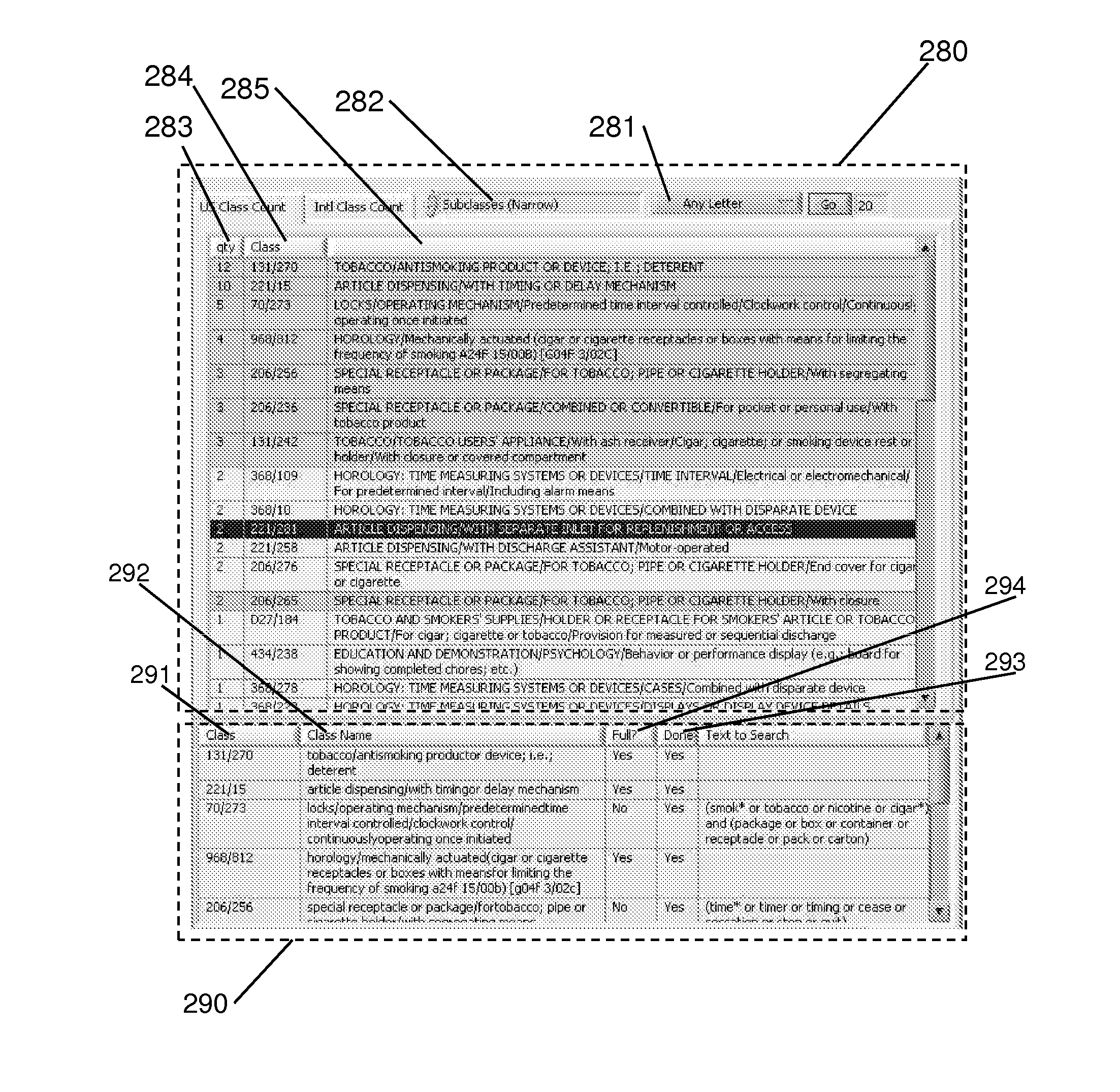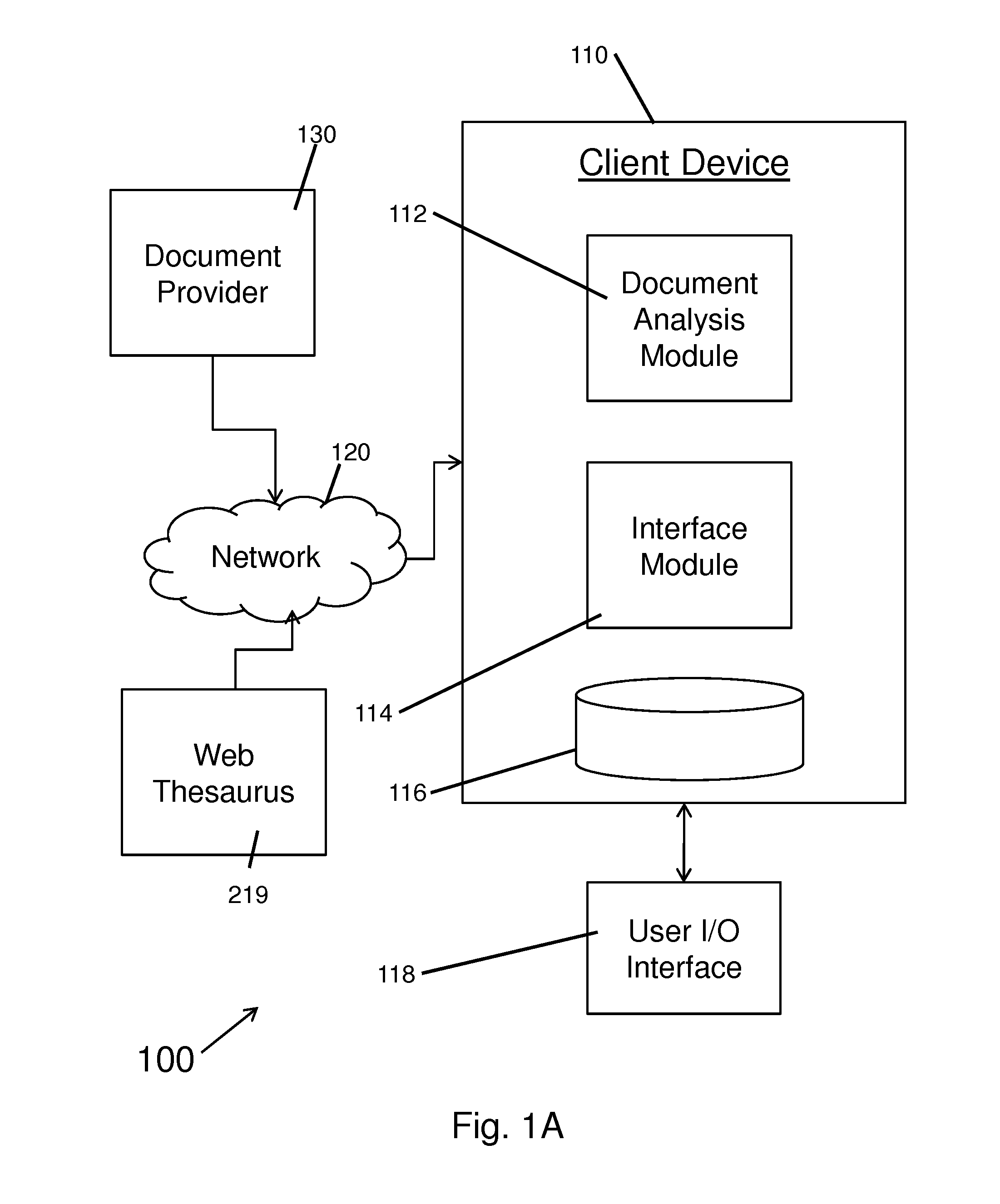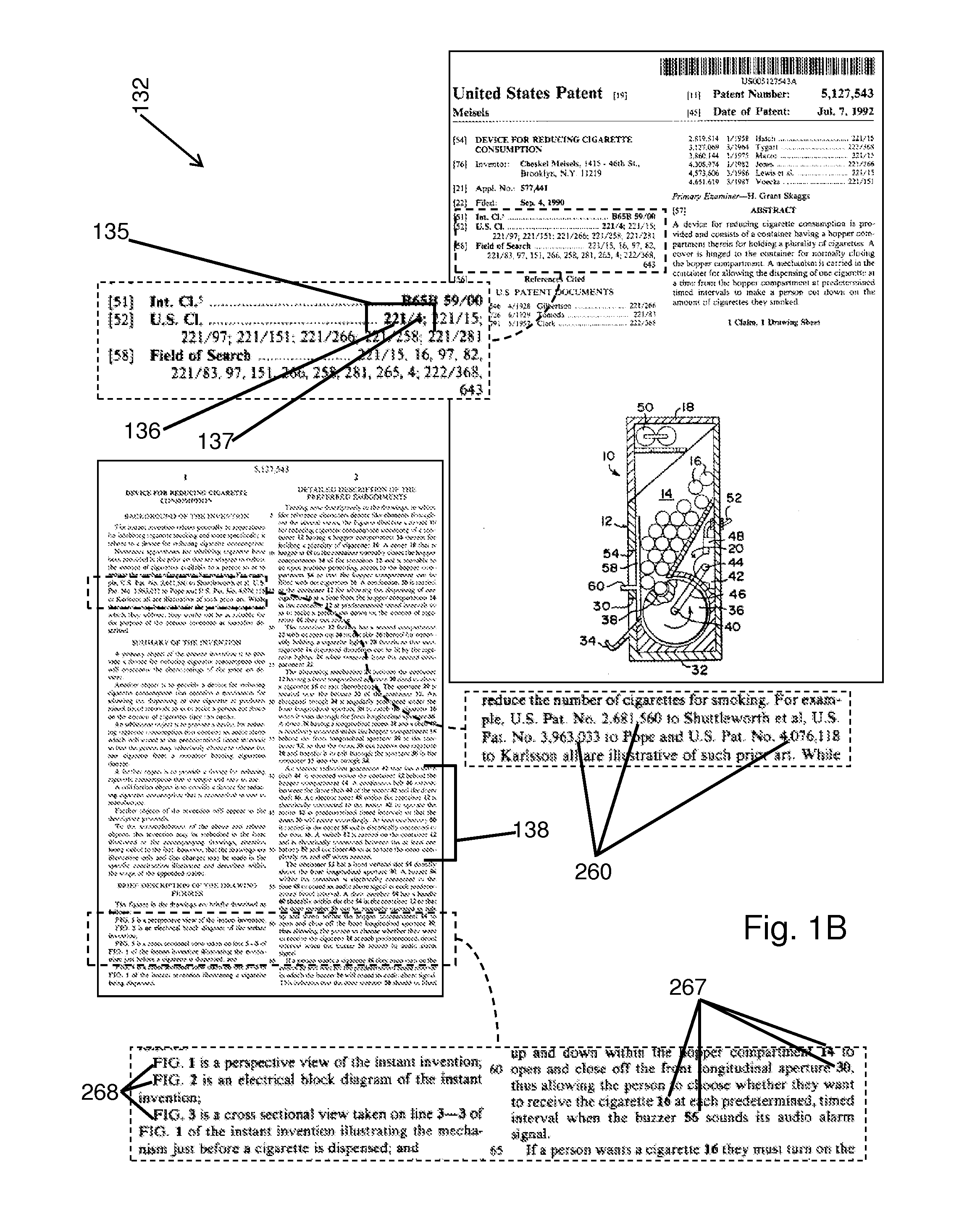Method and system for document presentation and analysis
a document and document technology, applied in the field of document analysis, can solve the problems of not showing a system for rapid display, patent search can become economically unfeasible, and the researcher cannot afford to simply spot-read, so as to facilitate the location and loading of groups, quickly assess the relevance of a document, and facilitate the rapid location of patent tex
- Summary
- Abstract
- Description
- Claims
- Application Information
AI Technical Summary
Benefits of technology
Problems solved by technology
Method used
Image
Examples
process 660
[0058]Process 660 Generate Figs Table 261
[0059]The Figs table will contain figure numbers 268, which are found throughout patent text as seen in FIG. 1B. Referring to FIG. 3G, first step 661: Select description of document 132. Next, at step 662, search for words immediately preceded by words such as fig, fig., figure, figs., figs, and add to a figs candidate array 677. Next, at step 663 Remove elements from the figs candidate array 677 that do not start with a number (i.e. allow 1, 2, 2C, 2D). Next at step 664 index with processed text 228, and load figs candidate array 677 and associated index (for quick mouse scrolling) into figs table 261. As seen in FIG. 2J, the index provides the researcher with rapid scrolling to and bolding of the figure number 268 that is clicked in the figs table.
[0060]Referring now to FIG. 4, another exemplary method 400 for performing document analysis will now be discussed. Steps 410 through 440 proceed in a similar manner to steps 310 through 340 of th...
PUM
 Login to View More
Login to View More Abstract
Description
Claims
Application Information
 Login to View More
Login to View More - R&D
- Intellectual Property
- Life Sciences
- Materials
- Tech Scout
- Unparalleled Data Quality
- Higher Quality Content
- 60% Fewer Hallucinations
Browse by: Latest US Patents, China's latest patents, Technical Efficacy Thesaurus, Application Domain, Technology Topic, Popular Technical Reports.
© 2025 PatSnap. All rights reserved.Legal|Privacy policy|Modern Slavery Act Transparency Statement|Sitemap|About US| Contact US: help@patsnap.com



